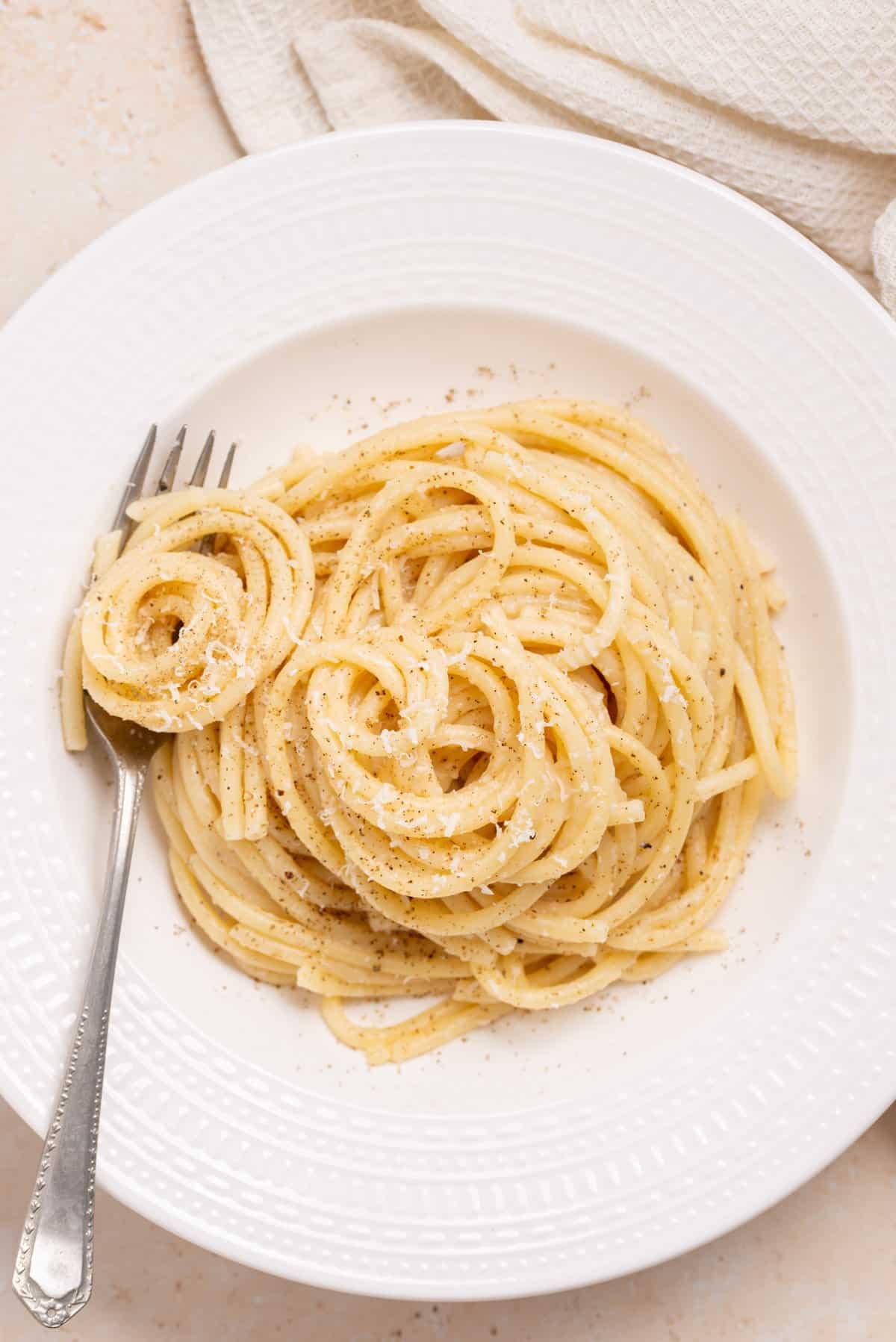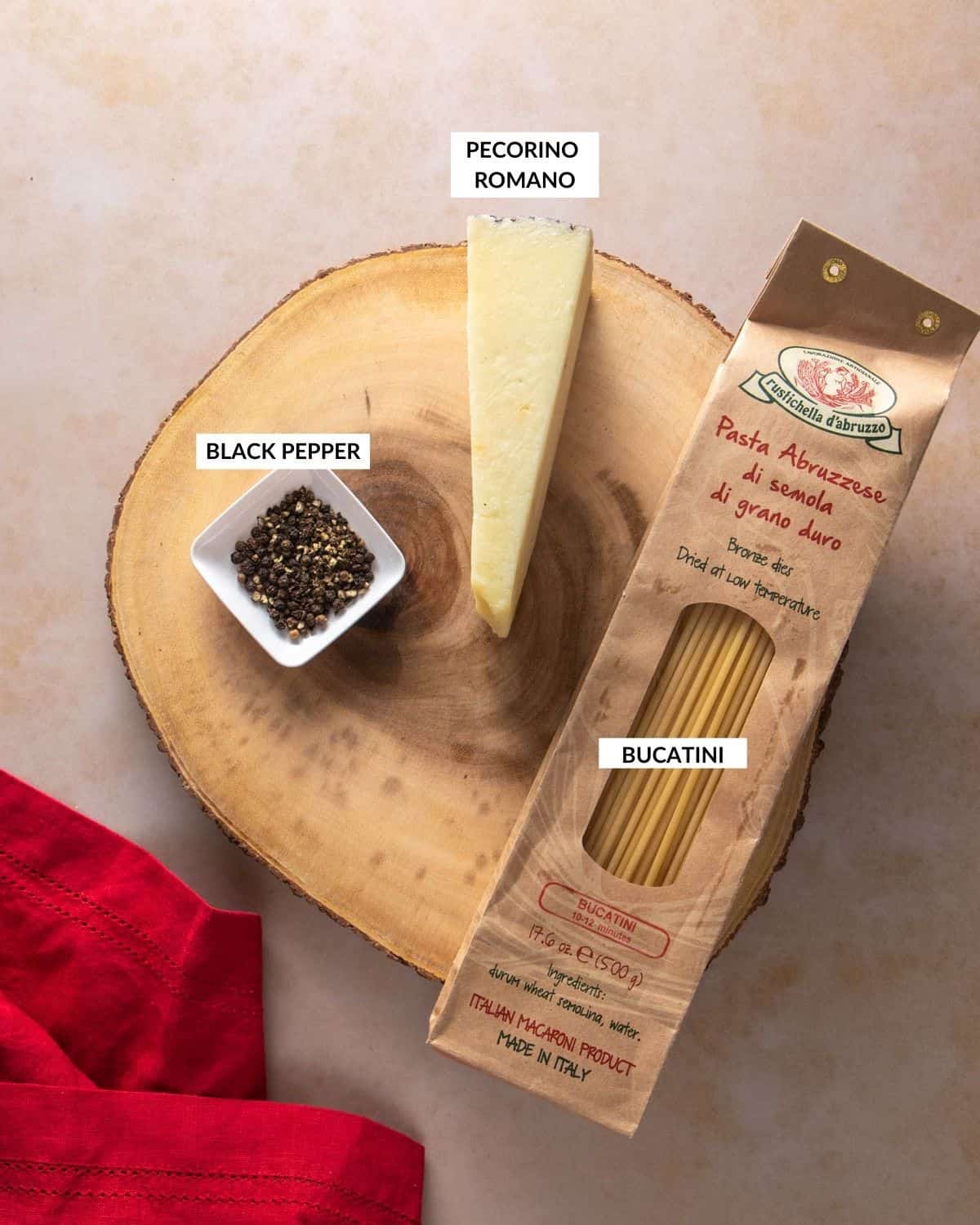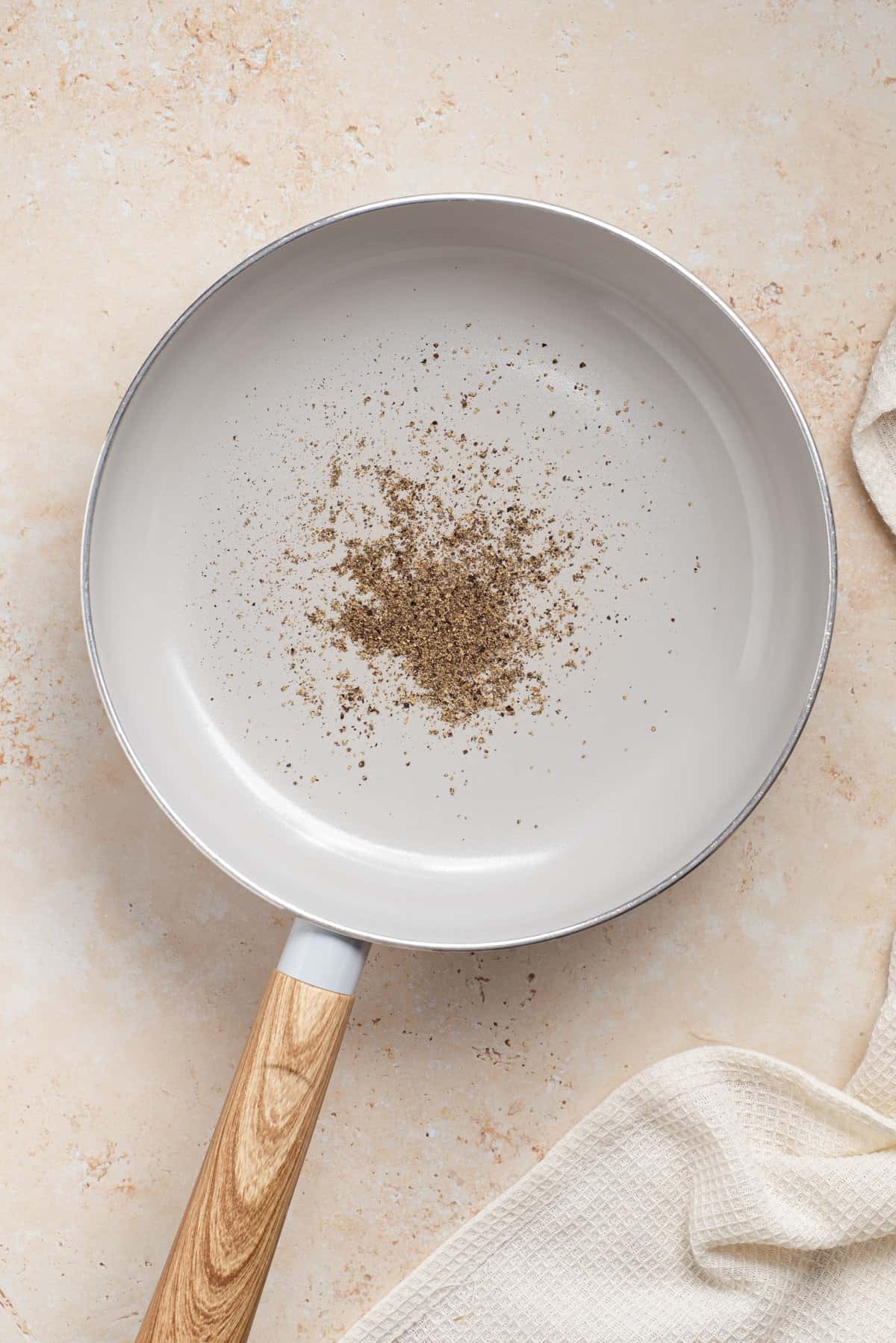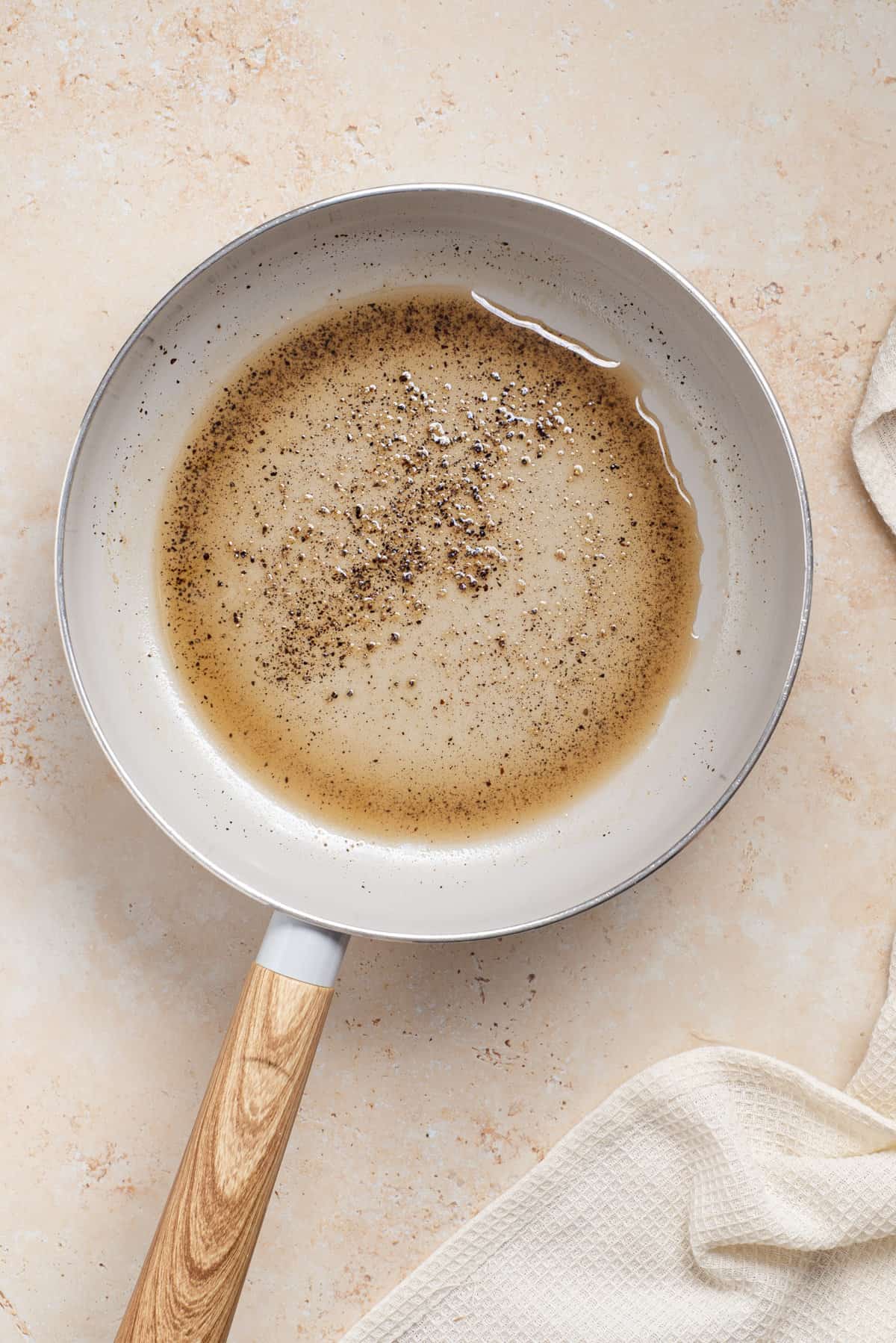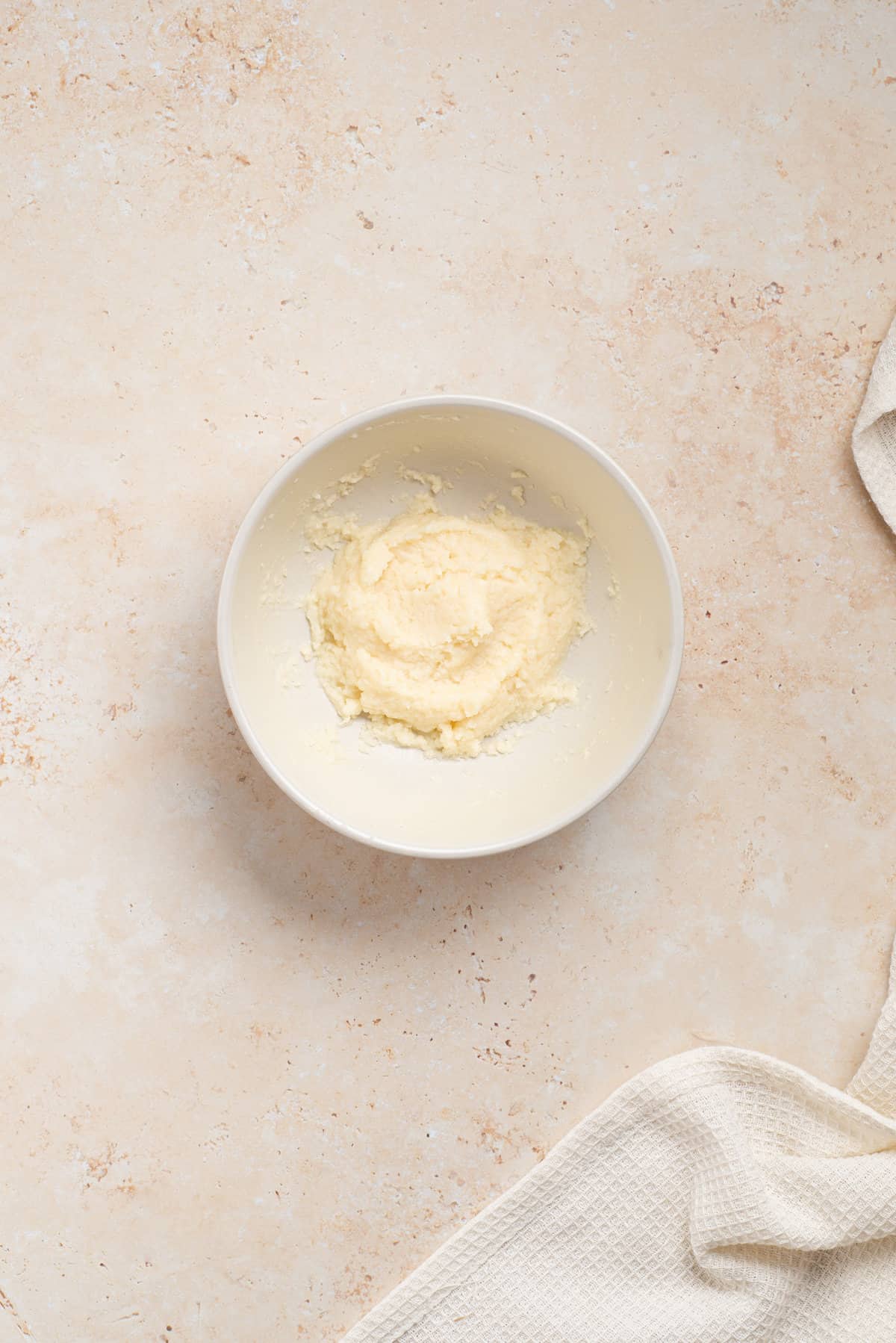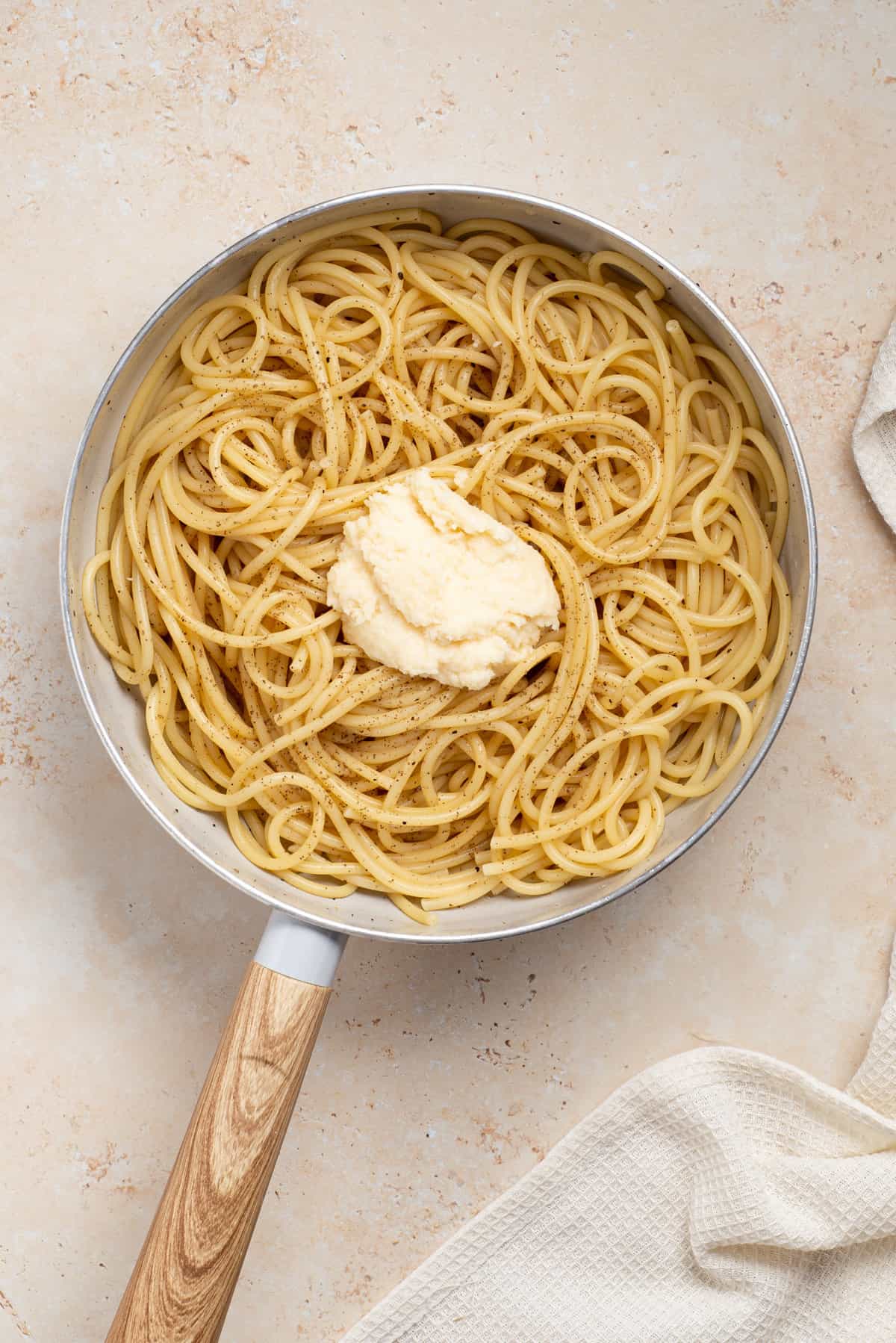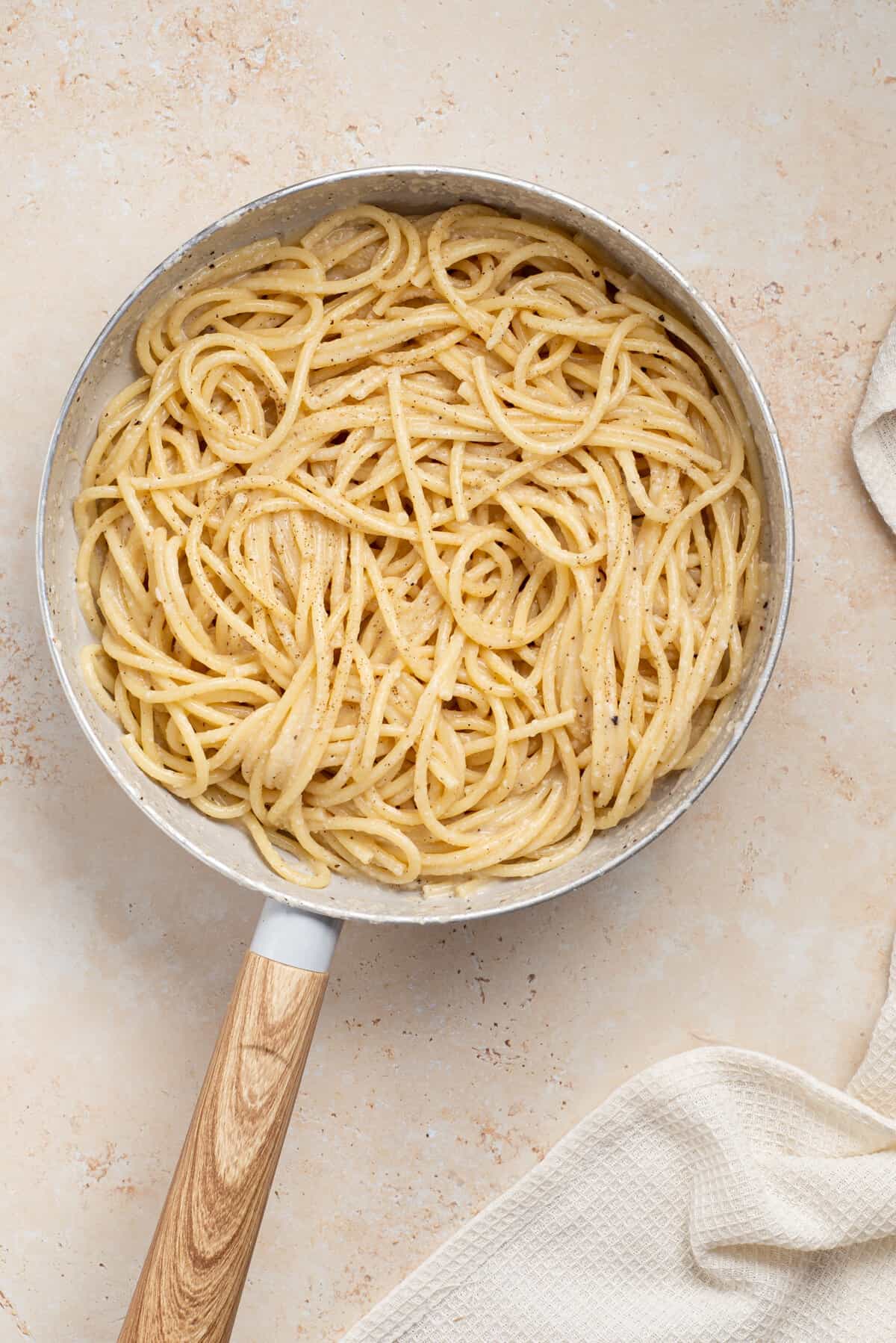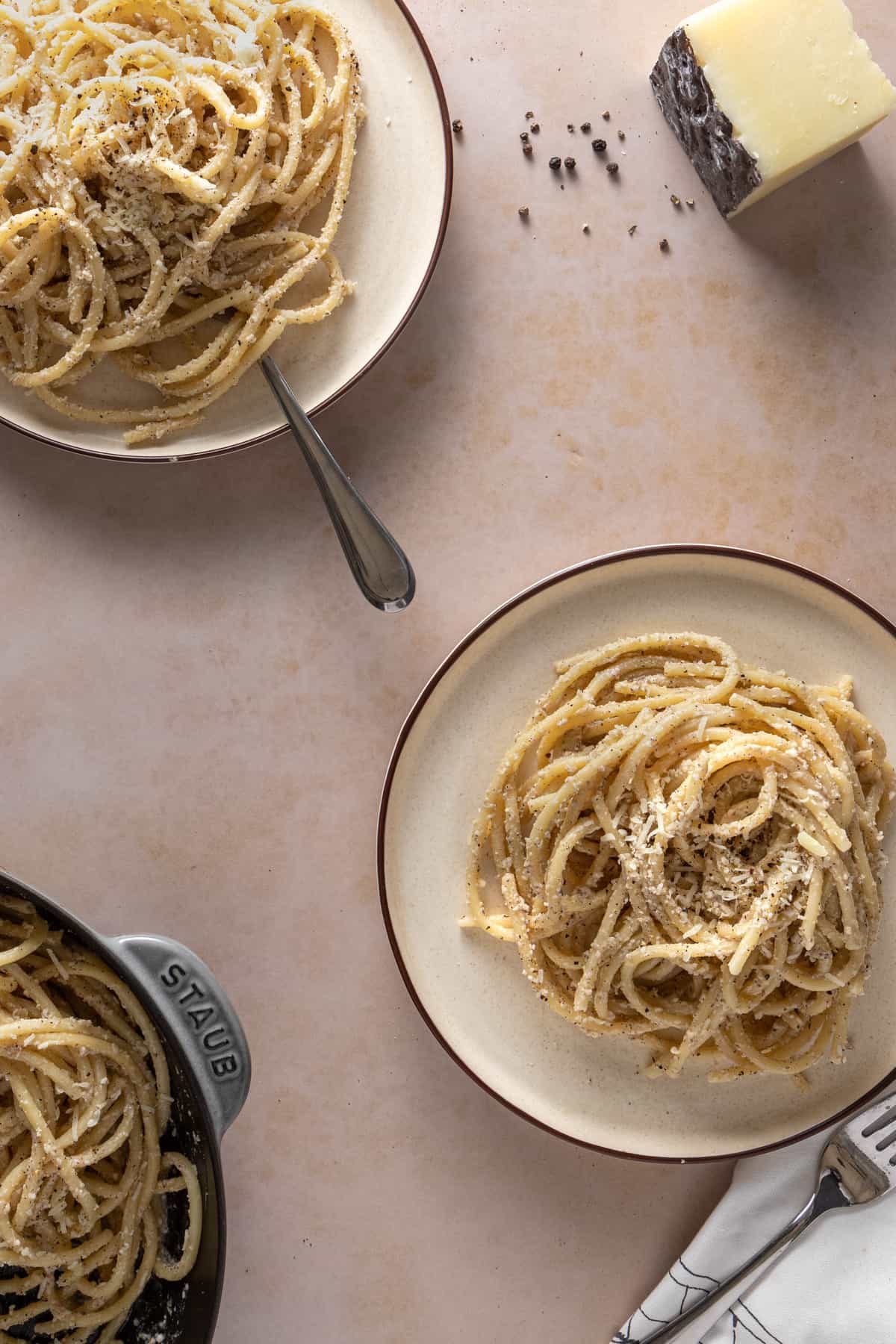💭 Why you’ll love this recipe
Inspired by Anthony Bourdain’s favorite cacio e pepe in Rome: This is a recipe I first learned to make when I lived in Rome, from Anthony Bourdain’s favorite restaurant. Uses only three ingredients: Traditional and authentic cacio e pepe does not use butter or cream. True to that, this recipe uses just three ingredients. Comes together in under 30 minutes: This recipe is as quick as it’s delicious, so it’s perfect for a quick weeknight meal or your next date night!
Notes:
What kinds of pasta can you use? Traditionally, tonnarelli or bucatini. But, any thick pasta or spaghetti can work in a pinch too. The key is to get a tubular, long pasta to which the sauce can adhere to. Traditional tonnarelli is a little coarse, making it super delicious when you add cheese. What kinds of cheese do you need? The only cheese you’ll need is pecorino Romano, the cheese native to that region. Try to get the sharpest pecorino Romano you can get your hands on and grate it fresh. If you can’t find pecorino, especially vegetarian pecorino, you can use parmesan (but just note that the flavors will be slightly different since pecorino is sharper) Do you use cream? Only if you want my old Italian landlord to haunt you from his grave … just kidding. But, seriously though - no cream or butter! Take the pasta water out when it’s starchiest, i.e. right before draining. That’s all you need to bind the pepper and cheese into gooey, saucy goodness. Using cream dilutes the sharpness of the cheese and it’s also not necessary!
♨️ Make authentic bucatini cacio e pepe!
Pro Tip: Save a couple of tablespoons of hot pasta water in case you need to thin the sauce. Doing this right before the pasta is done cooking to get the water when it’s starchiest, which, in turn, helps the cheese bind to the pasta. While pasta cooks, grate about 2 cups of Pecorino Romano (using the smallest hole on your grater). Set aside in a large bowl. 2 to 3 minutes before the pasta is done, heat a skillet on medium heat, and add a generous amount of freshly cracked pepper to toast it. Unconventional, tech-savvy tip: Add cheese and pepper to a small food processor along with a tablespoon of cold water and pulse until it forms a “lumpy” mixture (or use a fork). Then, use hot water to dilute and bring it to the right saucy consistency.
👩🏽🍳 Tips for authentic, foolproof cacio e pepe
Use high quality cheese and grate it yourself . Get the best cheese you can afford, you won’t regret it, and grate it yourself. Grated cheese often has potato starch or chemicals added to it, which makes it clump up and not melt. And you’ll want to use the smallest hole for grating - it’ll allow the cheese to melt uniformly into a consistent sauce! Use the right amount of water and drain at the right time. I typically don’t have pasta water volumes, but the key to this recipe is thinning the cheese with the starchy pasta water. So, ensuring the right amount of starch to water is important. Use a gallon of water per package of pasta and reserve the pasta water 2 minutes before indicated al dente time (for instance, if package says 10 minutes, reserve water at 8 min mark) If mixing by hand, whisk, whisk, whisk - the cheese WILL melt. The process is fairly seamless with a food processor, but if you’re mixing by hand, just keep whisking. Add cold water slowly to the grated cheese as you whisk (vs. adding it all at once). I suggest couple of tablespoons at a time. The cheese will appear clumpy at first, but don’t fret! The magic happens when you thin the sauce with hot water.
🍷 Storage & serving suggestions
This recipe can easily be scaled down on the recipe card, and where possible, I suggest making it fresh. However, if you made extra, you can just store in the fridge, portioned out. Then, add a splash of water to the portion, and microwave for 1 minute, stirring once in between. You can serve the cacio e pepe as a side to any meaty dishes if you have a carnivore in the family, or serve this as a main “primi” with a side salad (like my kale salad with pecorino and pepitas). It pairs quite neatly with a ton of stuff, but try to sneak in a glass of wine if you can - because nothing pairs better! Personal Note: I didn’t know when I lived in Rome that this was Anthony Bourdain’s favorite bowl of cacio e pepe. In fact, he loved the place so much that he wanted to keep it a secret. Small mom & pop restaurants would get flooded with positive reviews, grow an admirable following, but crumble under pressure. That said, I’m glad to report that this restaurant is still going strong, and the cacio e pepe is delectable. If you’re heading to Rome and want to know, leave me a comment!
More delicious Italian pasta recipes:
Penne PomodoroRigatoni Arrabbiata Paccheri al FornoTrenette al Pesto
If you tried this recipe, don’t forget to comment and rate! ⭐⭐⭐⭐⭐
📖 Recipe
